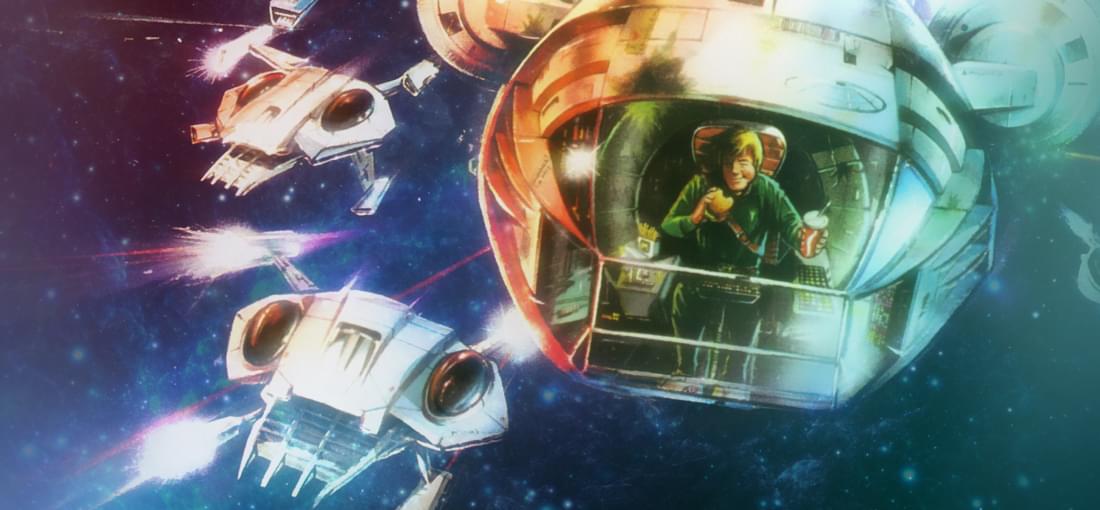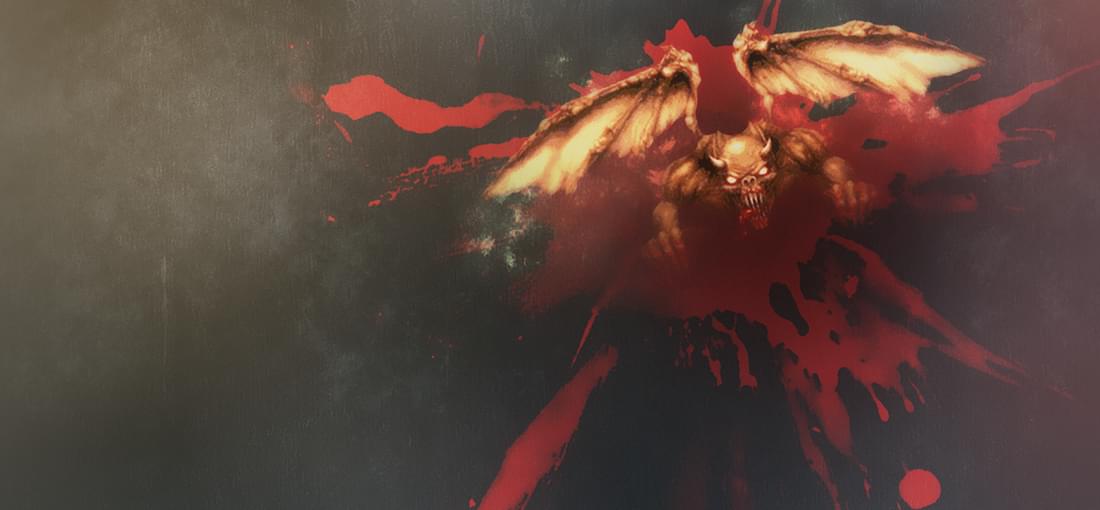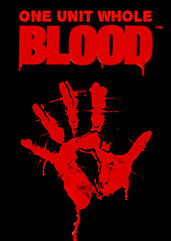


The first three entries in the Space Quest series are unique in the early Sierra line-up in their contemporary subject matter, and the rather linear flow of the puzzles and story. The more linear story progression helped immensely to make these games more fun than some of the others, because early PC games like these were limited by technological constraints. All of these games may have been graphic games, but they were all still parser-driven at this time, so the games were very limited to what words they could process or recognize. Therefore, most of the puzzles were to figure out what word was the right word to use to advance the story. The other puzzles were pixel hunts, which were excruciatingly boring in these early low-res games, and not so much more fun today. Basically, I felt as though the logical progression, and far more linear storyline of the Space Quest series greatly helped to mitigate the frustration of the pixel hunts and death scenes. This is because you had more information to work with, so the puzzles were less obtuse and more contextual. Furthermore, with the continuation of the series in the next three games, Space Quest really served as a template for action/adventure story interaction in the following three decades more than other popular series of adventure games. The Space Quest Series, along with "Quest for Glory," are my favorite Sierra titles from their classic period, which I would define as the late 1980's. The sci-fi and fantasy atmosphere of the Space Quest titles was very in touch with a number of movies and television shows of the time, and they felt more prescient than some of the other adventure games of the day because of it. Furthermore, Space Quest never took itself too seriously. All three of these games features a fun plot and amusing story elements. You may even find time to laugh at all of the many death scenes that are possible. Final Verdict: I would recommend these games to any fan of early adventure games, and I would absolutely recommend them as an introduction to the genre to newcomers. The more linear plots and fun pop culture references will doubtlessly be a boon to anyone who has not died over and over in an early Sierra game yet. Furthermore, I would recommend playing these games again to anyone who hasn't played them for a long time because there are so many little easter eggs buried in the story, that it is fun a second time around.


This game will never win any awards for originality. In spite of the many wonderful pop culture references tucked away in the levels, and the overt homage to H.P. Lovecraft's work, there is simply nothing in this game that hasn't been done before, and done since. But that doesn't matter, because Blood focuses on fun instead of drawing attention to it's story in a self-conscious manner. By the end of the first episode, though, the game started to wear on me a bit. The level design is okay, but the slightly limited amount of enemies makes strategy kind of a moot point, especially because this is before AI really existed in FPSs. There are not a huge variety of enemies in Blood, and many of them are small creatures like bats, rats, spiders, and fish that move very quickly and are very hard to shoot. This wouldn't be a problem if Blood's targeting mechanic were not so ponderous and inaccurate. It's true that the targeting in Blood is not much worse than other games from it's time, but why purposely design several enemies that highlight the game engines limitations? At the end of the day, the small creatures are easily defeated, but it takes a lot of time to squirm around the screen and get clear shots at them, and its not fun at all, it make me want to stop playing. Nevertheless, Blood is pretty solid, and while the enemies begin to get boring, the interesting levels and horror theme kept me going. Also, the "secrets" in this game are fun to find, just like in quake and doom, but the computer doesn't always register the secret as found. Sometimes I had to walk over the secret spot several times, or use the item that was inside of the secret area before the game recognized that I had found the secret. That got a little annoying. One time, I couldn't understand why I had one missing secret at the end of the a level, and I had to go back and look around for a secret that I had already taken, but the game didn't register it. I had even taken the life seed in the spot, but it didn't work until I went back to the spot and walked around in circles! All of those little complaints aside, Blood is a nice change if you have only played the ID games from the mid-90's, and it's a cool game for anyone who likes old horror flicks. Just don't expect something as epic as Quake. I personally don't think it's as fun, varied, or challenging as either Doom or Quake, although I like the theme of Blood so much, that I wish it was. I also wish that it had no bugs, but, in reality, it's not really more buggy than any other game from it's time. Final Verdict: It's fun, buy it, but don't plan on beating in one sitting. I predict that you will need a break from Blood after every episode, possibly every other level.

There are some interesting aspects to Phantasmagoria. The visuals are cool. and the campy horror atmosphere is well done. I thought the art design of the various locations is really appealing and though the character actors are poor, they fit the genre very well. I remember when this game first came out, and the large amount of hype surrounding it. FMV was the cool new thing because of CD-Roms, and this game was the poster child for a higher budget attempt at a FMV "game." Like almost all FMV "games" from the 1990's, Phantasmagoria never really plays like a game. Sure, there are items to collect and places to use them, but the items are simply used to trigger FMV sequences and advance the story. If this is all you crave, then this story is for you. However, if you want a game in the traditional sense, keep looking. (There are no puzzles worth mentioning here, it's not that kind of trip.) Personally, I don't like this kind of title. I get bored playing FMV stuff because the dead time spent walking around ruins the narrative for me, and there are not enough puzzles and stuff to keep those "walking around times" interesting in Phantasmagoria. If I want to watch a creepy story, I'll rent a real horror movie, and if I want to play a game, I want a real game. For me, this hybrid (that is more story than game) completely fails. I wanted to stop playing almost always. The only thing that got me through this one was nostalgia. It gets three stars based just on the art design and the honesty in the character acting.

With the possible exception of what I thought was an aversive opera scene in the game (I loathe opera), this was, and is, the perfect FMV game. To those of you out there who are new to the concept of 'full motion video' in a computer game, you are lucky. Most FMV stuff is absolute rubbish, and is only loved by those who can appreciate it's 'camp factor'. Because of the novelty involved with FMV, most of these games just pushed the video gimmick as a substitution for actual gameplay, leading your character from one scene to the next, slowly completing a story sequence through to the end. I will not pretend that the game designers work was easy. The work and preparation involved in FMV is basically similar to shooting a movie, and all of the organization that is necessary is part of it. Unfortunately, all the hard work was seldom backed up by a good story, and even less often by decent talent. Also, it quickly became apparent to the audience that FMV does not make a "game." These kind of story "games" still exist, and are very common here in Japan where I live to this day, but they are not treated as games, more like interactive DVD's. In any case, Gabriel Knight avoided the pitfalls of other FMVs by 1. having a great story 2. having good actors and 3. actually having a video game underneath all of the movie sequences. "The Beast Within" takes it's cues from the traditional adventure game structure. There are plenty of puzzle items to work with in the adventure game tradition, and you may even find yourself a bit stuck once in a while. However, getting stuck in GK is a blessing in disguise as it allows you to explore the beautiful locations, and peruse the abundant literature throughout the game. Which brings me to another good point... this is a game for people who don't mind reading. It is an intelligent game with a fantastic story that is supported by a lot of real historical research and a good deal of imagination. It is possible to finish the game without reading everything, but what would be the point? The only possible flaw in the whole game is that, for me, it could have been a little harder, but it is still the best FMV game ever made. Final Analysis: anybody who likes adventure games or FMV absolutely owes it to themselves to play this game. This is a "must play" kind of deal.